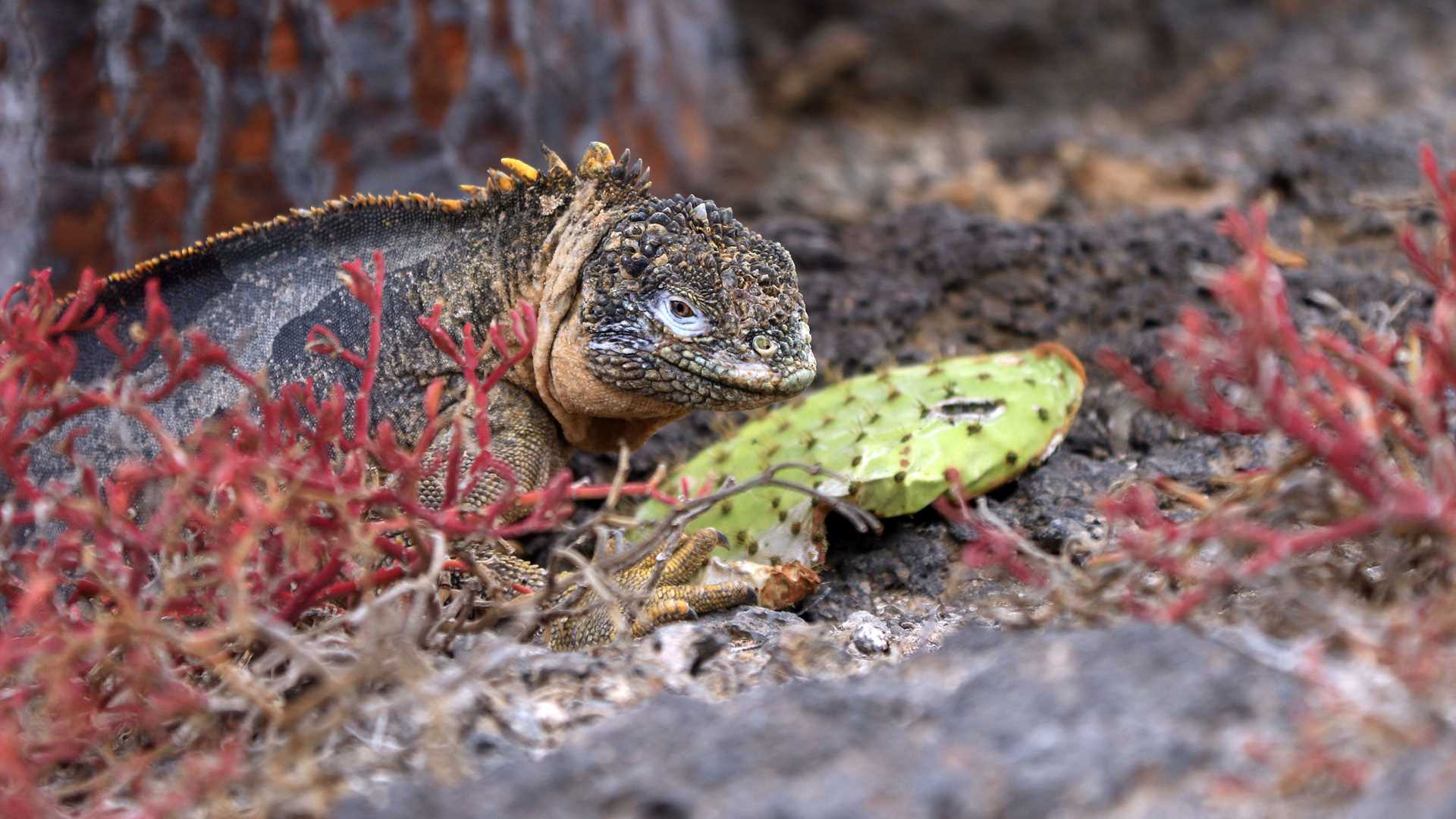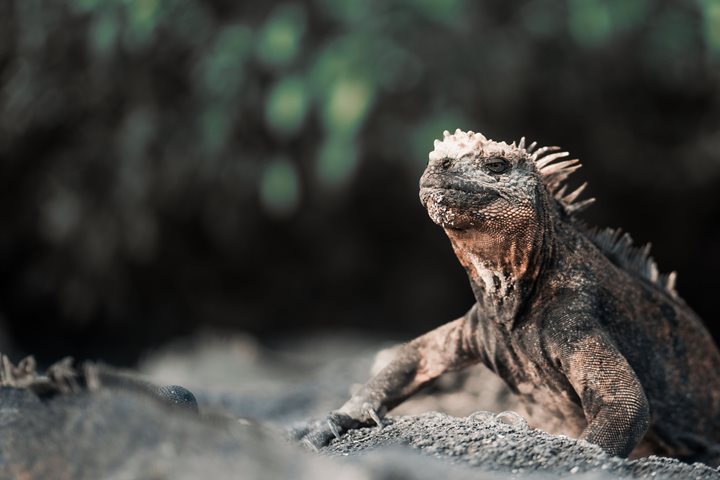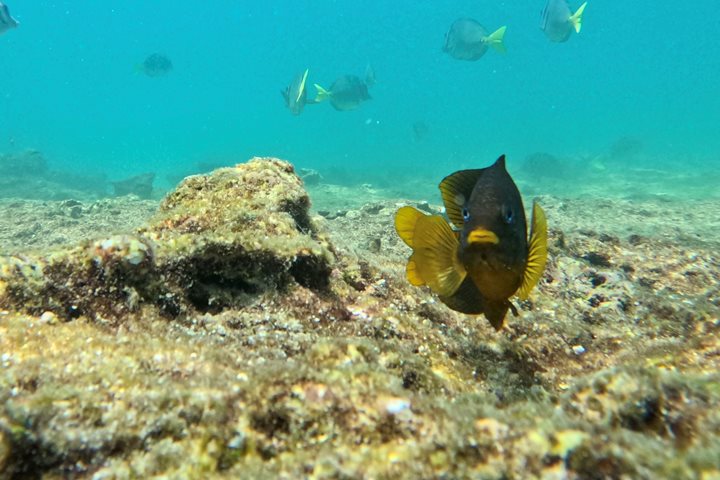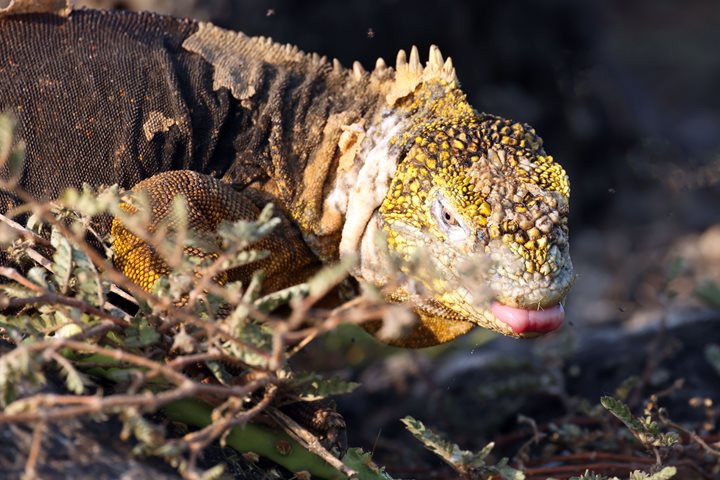In the center of Galapagos, the islands are uplifted by tectonic action. The evidence is found in many areas, such as bleached coral heads outside the water. Now, land creatures rest there. These two islands also are inhabited by one species each of land iguana. Both also have species of endemic prickly pear cactus, which the land iguanas use for water and food.
- Daily Expedition Reports
- 17 Nov 2022
South Plaza and Santa Fe Islands, 11/17/2022, National Geographic Islander II
- Aboard the National Geographic Islander II
- Galápagos
Share Report
Peru and Galápagos Escape
VIEW ITINERARYRelated Reports
4/19/2024
Read
National Geographic Islander II
Sombrero Chino and Sullivan Bay, Santiago Island
Today we explored Sombrero Chino and Sullivan Bay, Santiago Island which are remarkably beautiful sites because of their impressive wildlife and landscapes. During the morning, we kayaked and snorkeled at Sombrero Chino Islet. In the afternoon, we moved to Sullivan Bay, where our guests had the chance to go for a Zodiac ride and a hike.
4/18/2024
Read
National Geographic Islander II
South Plaza and Santa Fe Islands
We are ready to set out early to explore the small and picturesque island of South Plaza. Here we find the endemic Galapagos land iguana, their reptilian features and colors stand out against the lava rocks and cactus forest. Swallow-tailed gulls nest right on and alongside the trail. Sea lions play in the water or rest under the bushes. On Santa Fe Island, we continue our excursions, this time with aquatic activities such as kayaking and snorkeling in the shallow turquoise waters of Santa Fe Bay. Sea lions, turtles, large schools of various fish, and rays are found. Later we explored by land to see the island’s land iguanas, finches, doves, and mockingbirds.







